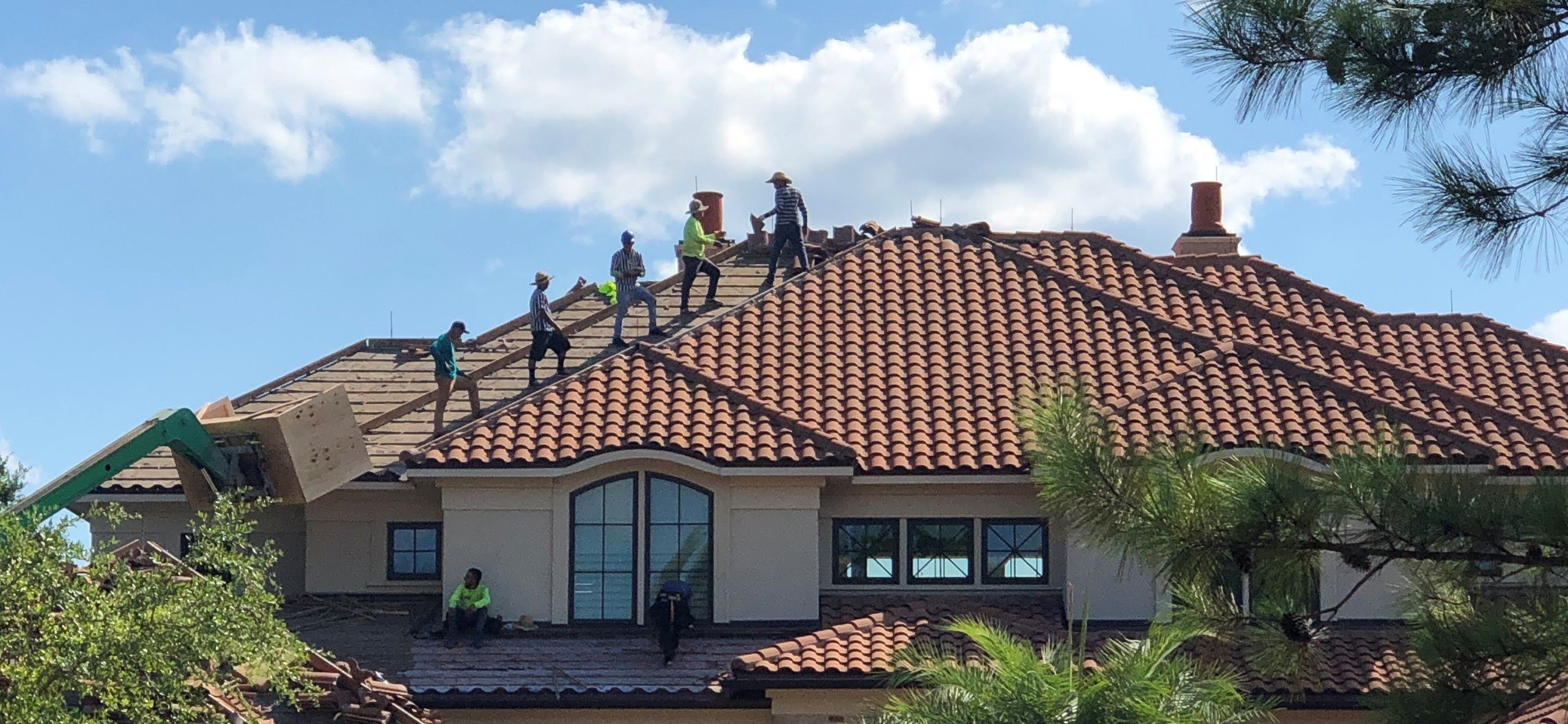Contrasting Costs Among Roofing Companies in Gainesville Florida
Contrasting Costs Among Roofing Companies in Gainesville Florida
Blog Article
Finest Practices for Ensuring Correct Roofing Air Flow
A balanced consumption and exhaust vent proportion, generally 1:300, plays a crucial function, with intake vents ideally put at the reduced edge of the roofing system for trendy air entry and exhaust vents at the top for cozy air leave. Keeping insulation away from vents is important to protect against airflow limitation.
Understand Ventilation Basics
Appropriately recognizing ventilation fundamentals is essential for ensuring the longevity and effectiveness of roof covering systems. Efficient air flow mitigates moisture buildup and temperature level extremes in the attic room, both of which can result in considerable architectural damage over time. A well-ventilated roofing system assists in avoiding typical problems such as mold growth, wood rot, and ice dams, which can compromise the integrity of the roof products and the underlying structures.
The key objective of air flow is to promote the motion of air, permitting a constant exchange between the interior and exterior environments. This balance is accomplished through a combination of consumption and exhaust vents that interact to preserve ideal airflow. Intake vents, generally located along the eaves or soffits, permit fresh air to get in the attic room area, while exhaust vents, typically situated at or near the roof ridge, enable warm, damp air to leave.
Key factors affecting the efficiency of roofing ventilation consist of appropriate placement, adequate sizing, and making certain that both consumption and exhaust vents are unblocked. Regular examination and maintenance are vital to determine potential obstructions, damage, or inadequacies in the ventilation system, consequently securing the roof's efficiency and durability.
Kinds of Roofing Vents
Roofing vents play a crucial duty in maintaining reliable attic room ventilation and, by expansion, the total health and wellness of the roofing system. Numerous kinds of roofing vents are available, each with distinct benefits customized to particular roofing needs. Ridge vents, as an example, are installed along the roofing's optimal, enabling cozy, humid air to leave from the attic room. They offer continual air flow and blend effortlessly with the roofline, making them both efficient and aesthetically pleasing.

Soffit vents are installed under the eaves and operate in tandem with roof covering vents to ensure a well balanced intake and exhaust system. By permitting cooler air to get in from below, soffit vents help with the expulsion of warm air through upper vents. Gable vents, situated on the outside walls of the attic room, offer an additional efficient remedy, specifically in homes with saddleback roofs.
Analyze Your Current Air Flow

Next, consider the age and condition of your roofing products and ventilation elements. Older systems may not abide by existing structure codes or may have deteriorated with time, decreasing their efficiency. Conduct a detailed assessment to recognize any indicators of wear and tear, such as rust, damage, or voids that might compromise the system's performance.
Furthermore, measure the attic room temperature and humidity degrees. High temperatures and moisture can show insufficient air flow - gainesville roofing companies. Utilize a hygrometer and thermostat to obtain precise analyses, contrasting them with exterior conditions. Persistent discrepancies recommend possible issues that require resolving.
Installment Best Practices
Reliable installation of roofing ventilation systems is vital for making sure optimum performance and longevity. Proper installation begins with recognizing the specific air flow demands of the roofing system and the building it covers. This includes determining original site the proper proportion of consumption to wear down vents, normally adhering to the 1:300 policy, which stipulates one square foot of ventilation for every single 300 square feet of attic floor space.

Intake vents should be set up at the roof covering's lower edge, frequently in the soffits, to permit awesome air to go into. Exhaust vents, on the various other hand, must be installed near or at the roofing system's top to help with the leave of cozy, moist air.
Seal all vent links meticulously to avoid air leakages and possible water infiltration. Usage high-quality materials and follow supplier standards to ensure sturdiness and performance. Additionally, integrating ridge vents with baffles can substantially enhance air movement efficiency by stopping wind-driven rainfall and snow from getting in the attic room.
Inevitably, precise installment of roof ventilation systems alleviates possible concerns such as mold growth, ice dams, and structural damage, making certain the roofing system's stability and the building's overall wellness.
Normal Upkeep Tips
Consistency in maintenance techniques is fundamental to guaranteeing the long-term performance of roof ventilation systems. During these inspections, make certain that vents are cost-free of debris, nests, and various other obstructions that could restrain air movement.
Cleaning up the vents is an additional necessary task. Utilize a soft brush or a vacuum cleaner to eliminate dirt and debris from intake and exhaust vents. Beware not to damage the air vent screens or louvers during the procedure. Additionally, evaluate the attic room space for any kind of signs of water damages, which can compromise the honesty of check the roof.
Appropriate insulation is just as important. Guarantee that attic insulation does not obstruct the vents, as this can severely restrict air flow. If any insulation has actually changed or settled, rearrange or change it to keep an effective barrier.
Lastly, change any kind of damaged or missing components without delay. Broken vents, broken roof shingles, or worn-out flashing can all add to insufficient air flow and must be addressed immediately. Routine maintenance ensures that the roof ventilation system works efficiently, thereby extending the life expectancy of the roofing itself.
Final Thought
Making certain appropriate roof covering air flow is extremely important for preserving the performance and toughness of a roofing system. Adherence to the 1:300 intake and exhaust air vent ratio, paired with the critical placement of vents, is vital.
A balanced consumption and exhaust vent ratio, frequently 1:300, plays a critical role, with intake vents ideally placed at the lower side of the roof covering for cool air entrance click to read and exhaust vents at the peak for cozy air exit. Intake vents, commonly located along the soffits or eaves, permit fresh air to go into the attic room, while exhaust vents, typically positioned at or near the roof ridge, make it possible for hot, damp air to run away.
Soffit vents are mounted under the eaves and work in tandem with roof covering vents to make sure a balanced intake and exhaust system. By enabling cooler air to get in from below, soffit vents assist in the expulsion of hot air via upper vents. Adherence to the 1:300 intake and exhaust vent proportion, paired with the critical placement of vents, is vital.
Report this page